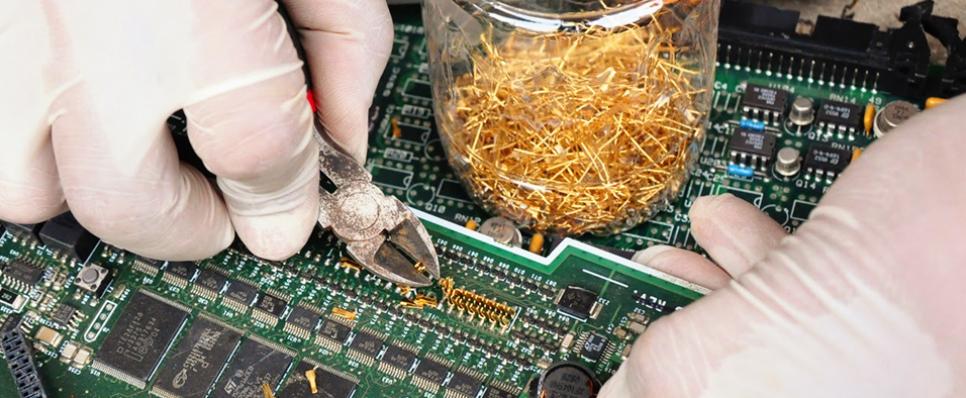Published: 06 Feb 2018
Why is gold used in electronics?

Gold’s physical properties make it the ideal material for use in a wide range of electronic applications:
- It has high electrical conductivity
- It does not corrode or tarnish, unlike other highly conductive metals, such as copper and silver
- It is a soft, pliable material, which can be easily drawn out into narrow wires or plated into thin coatings
There are considerable number of uses for gold within the electronics sector, the most significant being as an electroplated coating on connectors and contacts. This is followed by gold bonding wire within semiconductor packages. These two applications dominate electronics demand for gold.
The coating on electrical contacts and connectors is often the only visual clue that gold resides in an electronic device. When two gold surfaces are brought into contact, the resulting electrical connection offers unrivalled stability, even using extraordinary thin coatings of the metal. Materials that suffer from corrosion often from oxidise at their surface which act as insulators, interrupting – and sometimes destroying – the electrical connection and potentially causing the device to fail.
Unlike contacts and connectors, gold bonding wire in a piece of electronic equipment is not visible, but it is almost certainly present. Bonding wire is used to make electrical connections between the semiconductor terminals and a thin layer of metal in the device. Chips can sometimes have hundreds of wire bond connections, each using a tiny amount of gold.
These two applications, alongside a range of smaller sources of demand, have seen over a thousand tonnes of gold used in the electronics sector in the past four years alone.











